NorthernKeys
Registered User

Is this a juvenile Neotropic Cormorant? Found on the morning of 3rd September and the afternoon before at Old Hickory Dam in Sumner County, Tennessee. It was sitting in the same spot both times, on the bank of the river near the dam with no other cormorants near by.
I believe it could be a Neotropic Cormorant over a Double-crested Cormorant due to the overall browner colour, absence of orange lores, angle of gular pouch, presence of white border around gular pouch, pointy covert feathers, and proportionally long tail. It appears its tail may be wedge shaped too, but it's hard to tell from the angle in the photos.
Compared to a confirmed sighting of a Neotropic Cormorant in Davidson County, Tennessee from last year, this cormorant looks nearly identical. Additionally, it looks very similar to a current confirmed Neotropic Cormorant in Cocke County, Tennessee.
I posted this on Reddit and in a Tennessee Birding Facebook group previously, and while a couple of people have agreed it may be a Neotropic, the idea of it being a Neotropic x Double-crested hybrid was also raised. I believe this not to be the case, since what little information about hybrids I've found suggests that one would not have the white border around the gular pouch and may retain the orange lores. However, I'm certainly still open to it being a possibility.
Thanks in advance! |=)|
I believe it could be a Neotropic Cormorant over a Double-crested Cormorant due to the overall browner colour, absence of orange lores, angle of gular pouch, presence of white border around gular pouch, pointy covert feathers, and proportionally long tail. It appears its tail may be wedge shaped too, but it's hard to tell from the angle in the photos.
Compared to a confirmed sighting of a Neotropic Cormorant in Davidson County, Tennessee from last year, this cormorant looks nearly identical. Additionally, it looks very similar to a current confirmed Neotropic Cormorant in Cocke County, Tennessee.
I posted this on Reddit and in a Tennessee Birding Facebook group previously, and while a couple of people have agreed it may be a Neotropic, the idea of it being a Neotropic x Double-crested hybrid was also raised. I believe this not to be the case, since what little information about hybrids I've found suggests that one would not have the white border around the gular pouch and may retain the orange lores. However, I'm certainly still open to it being a possibility.
Thanks in advance! |=)|
Attachments
-
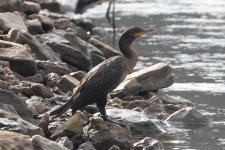 Cormorant-OldHickoryDam-20200903-2848.jpg624.3 KB · Views: 36
Cormorant-OldHickoryDam-20200903-2848.jpg624.3 KB · Views: 36 -
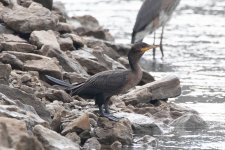 Cormorant-OldHickoryDam-20200903-2837.jpg603.1 KB · Views: 23
Cormorant-OldHickoryDam-20200903-2837.jpg603.1 KB · Views: 23 -
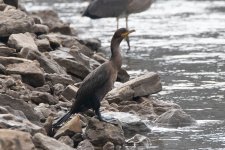 Cormorant-OldHickoryDam-20200903-2841.jpg624.5 KB · Views: 22
Cormorant-OldHickoryDam-20200903-2841.jpg624.5 KB · Views: 22 -
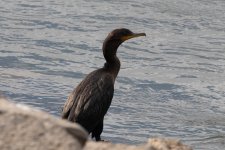 Cormorant-OldHickoryDam-20200903-2853.jpg491.7 KB · Views: 28
Cormorant-OldHickoryDam-20200903-2853.jpg491.7 KB · Views: 28 -
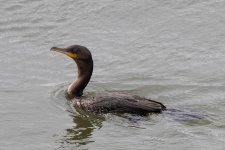 Cormorant-OldHickoryDam-20200903-2868.jpg537.3 KB · Views: 28
Cormorant-OldHickoryDam-20200903-2868.jpg537.3 KB · Views: 28




